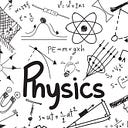To uncover how exactly atomic bombs work, first we need to examine the phenomenon on nuclear fission. Which is different from nuclear fusion, seeing as how fusion occurs when atomic nuclei fuse together to form a bigger nuclei and fission is where they are broken apart.
In more detail, fission essentially describes the process in which an immense amount of heat and energy is released, due to instability in the nucleus of radioactive atoms. This would be due to neutron collisions that split apart the nucleus into 2, tearing apart the structure of the atom and giving away more neutrons.
Now how does this come into play, in terms of atomic bombs?
Usually, uranium-235 or plutonium-239, all extremely radioactive, are held in a chamber of sorts, surrounded by an expanse of explosives that contain the element and push it together, thus increasing its density until it reaches a certain point called ‘critical mass’. This would determine the point at which, when fired at by a neutron emitter, the resulting fission would give out enough neutrons which would split more and more Uranium or Plutonium atoms until it set off a chain reaction.
Unfortunately, Atomic bombs have also played an integral role into shaping the history and use of nuclear weapons, with a special starring role into causing the end of World War 2.
In 1938 German physicists Otto Hahn and Fritz Strassmann discovered nuclear fission and while they were unknowing of its applications at the time, they did eventually come to the conclusion and realization that yes, an uranium nucleus had split in two. This marked a tremendous period of time where research in nuclear physics peaked, and also peaked concerns about word of the implications of an atomic bomb that set off a nuclear arms race that went on till the end of the century. Word reached the Allies, and thus came Robert Oppenheimer, now known as the “father of atomic bombs”, who dedicated his life to the research and application of nuclear fission, and played a fairly big role in the Manhattan Project in the 1940s.
The Manhattan Project
The Manhattan Project was a top secret undertaking by the US, in hopes of getting Japan to finally surrender to the Allies, fueled by genuine curiosity into the intricate workings of nuclear fission. The fruit of this mission came in the form of the first nuclear weapons ever created: FATMAN (plutonium based) and LITTLE BOY (uranium). As you can guess, FATMAN was the bigger of the two, weighing over 10800 pounds, and LITTLE BOY was 9700. Both did severe impact to the towns of Hiroshima and Nagasaki, causing the same sum amount of damage as nearly 36000 tons of TNT.
Nuclear bombing is now governed by the Prohibition of Nuclear Weapons (TPNW), Strategic Arms Reduction Treaty (START), Nuclear Weapon Free Zones (NWFZ), and the International Campaign to Abolish Nuclear Weapons (ICAN).
The devastating effects of nuclear arms will never be forgotten and remain etched on the dark pages of human history, forever a remainder of the true capability of the impacts of violence, war and greed on innocent human lives.
